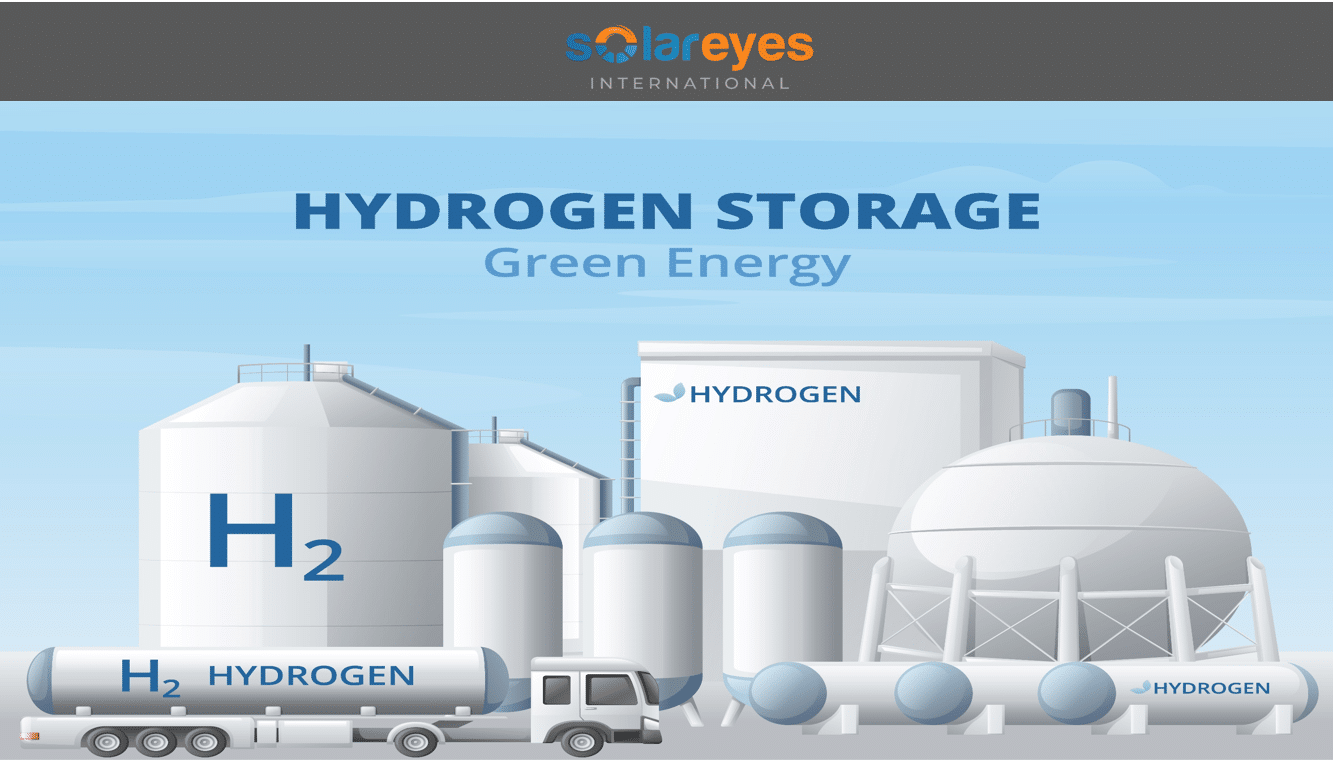The Role of Hydrogen Production in Energy Transition

Background on The Role of Hydrogen Production in Energy Transition
The world is currently facing a critical challenge of reducing carbon emissions and transitioning to clean energy sources.
The use of hydrogen as a clean energy source has gained significant attention in recent years, with green and blue hydrogen being the two most popular types of hydrogen.
The production of green hydrogen using renewable electricity is anticipated to be crucial in achieving long-term decarbonization objectives and enhancing energy security.
Even though renewable energy sources currently account for less than 1% of the world’s hydrogen production, renewable hydrogen is gaining more attention from policymakers.
Twenty-five nations, including the European Commission, have declared plans to use hydrogen as a clean energy source, and some have started implementing financial support programs. Due to this, the number of projects in various stages of development for using electrolysers for hydrogen production from renewable electricity has increased in recent years.
The Process of Hydrogen Production
Green hydrogen is produced from renewable energy sources, such as wind, solar, and hydropower, through the process of electrolysis. During this process, electric current passes through water, which separates the hydrogen and oxygen molecules.
The resulting hydrogen is then captured and stored for later use. The production process of green hydrogen emits zero carbon emissions, making it a highly sustainable and clean energy source.
Moreover, it can provide a reliable source of energy that is not dependent on fluctuating oil prices or geopolitical tensions. Blue hydrogen is produced from natural gas, through a process called steam methane reforming (SMR). During SMR, natural gas is heated and mixed with steam, which produces a gas mixture of hydrogen and carbon dioxide (CO2).
The CO2 is then captured and stored, typically in underground geological formations, rather than being released into the atmosphere. The hydrogen produced through this process can be considered cleaner than traditional hydrogen production methods, but the carbon capture and storage (CCS) process still has some associated carbon emissions.
The production of green hydrogen can benefit from economies of scale, and as the technology for renewable energy sources continues to develop, the cost of producing green hydrogen is expected to decrease.
Furthermore, the transportation and storage of green hydrogen are relatively straightforward. Green hydrogen can be transported through pipelines, stored in tanks or caverns, and used as a fuel for a wide range of applications, including transportation, power generation, and industrial processes.
In contrast, the transportation and storage of blue hydrogen require additional infrastructure for CCS, which adds to the overall cost and complexity of the process but in the short term the current infrastructure for natural gas production, transportation and storage can be used.
Hydrogen Production and Use by Other Countries Globally
Two of many countries that have shifted their focus at this new technology are Germany and China. According to the International Energy Agency, Germany is one of the top ten countries in the world with its strategic plan for this decade for producing green hydrogen.
Germany hopes to increase the use of hydrogen and lessen its reliance on coal. Accordingly, the government has set aside 7 billion euros for investments in the creation of green hydrogen, with the following measures: -building a production capacity of 5 GW by 2030 and additional capacities of 5 GW will be built by 2035-2040, hydrogen production will be done through tenders for electrolysis services, subsidies for building new plants, and new pilot programmes.
Hydrogen will be promoted in the industrial sector in order to reduce the use of fossil fuels in industrial processes (ex: to produce climate-friendly steel).
Germany will also promote the direct use of green hydrogen in aircraft engines, and encourages the development of concepts for hybrid electric flying (combination of hydrogen / fuel cells / battery technology).
China is one more nation that is at the forefront of this technology. This country has created one of the largest fleets of fuel cell electric vehicles in the world since releasing its first hydrogen road map in 2016.
It undoubtedly contributes to Asia-Pacific becoming the region with the hydrogen market’s fastest growth. However, grey hydrogen, or hydrogen obtained using fossil fuels, makes up the majority of the fuel that China produces.
This strategy does not aid in the transition away from fossil fuels or advance the cause of net zero, but it is developing a sizable hydrogen industry and fuel cell technology. The government’s plans to decarbonize industry and transportation have prompted China to deploy over 18 GW of dedicated renewable capacity by 2027.
Following China in terms of expansion are Australia, Chile, and the United States. Approximately two thirds of the dedicated renewable capacity for hydrogen production is collectively accounted for by these four markets.
Conclusion
Green hydrogen has the potential to play a crucial role in the energy transition that is currently underway. Its versatility, energy storage potential, and economic benefits make it an attractive alternative to fossil fuels for a wide range of applications.
However, more investment and innovation are needed to overcome the challenges of production costs and infrastructure development. Government subsidies and incentives are needed to encourage investment in green hydrogen production and infrastructure.
In addition to its versatility and energy storage potential, green hydrogen also has the potential to create new economic opportunities. As more countries invest in the production and use of green hydrogen, new jobs are being created in the manufacturing, transport, and installation of hydrogen infrastructure.
This can help to stimulate economic growth and create a more sustainable future for communities around the world.
————-THE END—————-
This article was written by Shqipe Asani who is a SolarEyes Contributor. More information about SolarEyes Contributors can be found on this link: https://solareyesinternational.com/solareyes-international-contributors/
FOLLOW US ON SOCIAL MEDIA
Follow us on LINKEDIN, FACEBOOK, TELEGRAM GROUP and WHATSAPP.
HOW TO SIZE A SOLAR SYSTEM – 5 clear steps anyone can follow
HOW TO START A SOLAR COMPANY – do these 6 things and make money through solar





